What is On-Page SEO and Why is it Important?
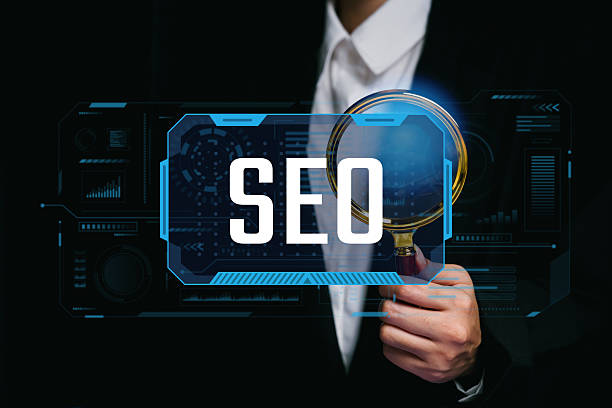
What is On-Page SEO and Why is it Important?
On-Page SEO refers to a set of actions you perform within your website to improve your site’s ranking in search engines like Google.
These actions include optimizing content, site structure, HTML tags, loading speed, and other technical and content factors.
The importance of On-Page SEO lies in helping search engines better understand your site’s content and present it to relevant users.
When On-Page SEO is done correctly, your site achieves a better ranking in search results, receives more traffic, and ultimately, moves closer to its business goals.
Imagine you own a shop.
If your shop window is neat and attractive, more customers will be drawn to it.
On-Page SEO does exactly the same for your website.
By optimizing your website, you make it more appealing to search engines and users, increasing the likelihood of their visits and engagement.
In the #competitive online world, On-Page SEO is a necessity.
Without attention to internal optimization, your efforts in link building and content marketing will not yield the desired results.
This is because search engines first pay attention to the site’s structure and content, and then to external factors like links.
So, if you want to succeed in the online world, take On-Page SEO seriously and give it special attention.
By doing so, you can turn your site into a valuable resource for users and improve your ranking in search engines.
Does your current corporate website not reflect your brand’s credibility and strength as it should? Rasaweb solves this challenge for you with professional corporate website design.
✅ Increase visitor credibility and trust
✅ Attract more targeted customers
⚡ Click for a free consultation!
Keyword Research #: The Cornerstone of On-Page SEO
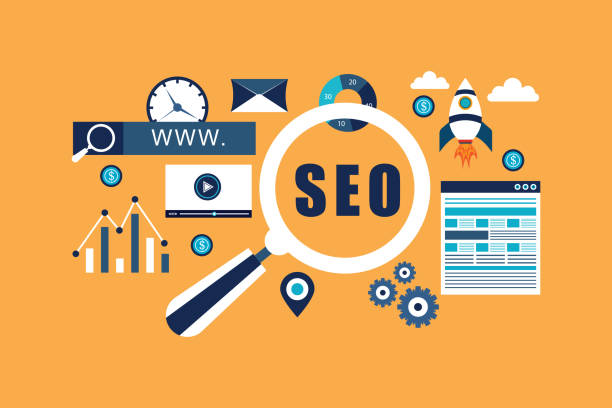
Keyword Research #: The Cornerstone of On-Page SEO
Keyword Research is a process of identifying words and phrases that users employ to search for information on search engines.
These are the words you should use in your site’s content to achieve a better ranking in search results.
Choosing the right keywords is the first step in On-Page SEO.
By understanding keywords relevant to your business, you can create content that precisely meets user needs.
This not only increases your site’s traffic but also improves the Conversion Rate.
Various tools are available for keyword research.
Some of these tools are free, and some are paid.
Tools like Ahrefs, Moz Keyword Explorer, and Ubersuggest are among the popular tools in this field.
Using these tools, you can obtain relevant keywords, search volume, competition level, and other useful information.
When selecting keywords, pay attention to two important points: First, keywords must be relevant to your site’s topic.
Second, keywords must be searched for by users.
Using irrelevant keywords or keywords that no one searches for will be of no benefit to you.
After identifying keywords, you should naturally incorporate them into your site’s content.
Avoid overusing keywords, as this may result in your site being penalized by Google.
Instead, try to produce valuable and useful content that naturally includes keywords.
Optimizing Title Tags and Meta Descriptions for On-Page SEO
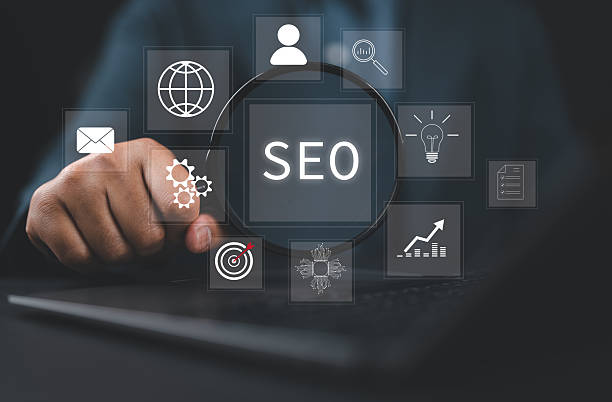
Optimizing Title Tags and Meta Descriptions for On-Page SEO
Title Tags and Meta Descriptions are two important elements in the HTML of web pages that are displayed in search results.
Optimizing these two elements plays a significant role in attracting users and increasing the Click-Through Rate.
Titles are the most important ranking factor in On-Page SEO.
Each page’s title must be unique, relevant to the page’s topic, and include primary keywords.
The title length should be between 50 and 60 characters to be fully displayed in search results.
Meta descriptions are summaries of the page’s content that are displayed below the title in search results.
Meta descriptions should be engaging, descriptive, and include keywords.
The length of meta descriptions should be between 150 and 160 characters.
Optimizing title tags and meta descriptions helps search engines better understand the page’s topic and present it to relevant users.
Furthermore, this encourages more users to click on your site’s link and visit it.
To optimize title tags and meta descriptions, pay attention to the following points:
- Use primary keywords in the title and meta description.
- Titles and meta descriptions must be unique.
- Titles and meta descriptions should be engaging and descriptive.
- The length of titles and meta descriptions should be appropriate.
By adhering to these tips, you can effectively optimize title tags and meta descriptions and improve your site’s ranking in search results.
Below is an example of a table for keywords:
| Keyword | Search Volume | Competition Level |
|---|---|---|
| On-Page SEO | 1000 | Medium |
| Website Optimization | 800 | High |
| Improve Google Ranking | 600 | Medium |
Optimizing URL Structure and Internal Links
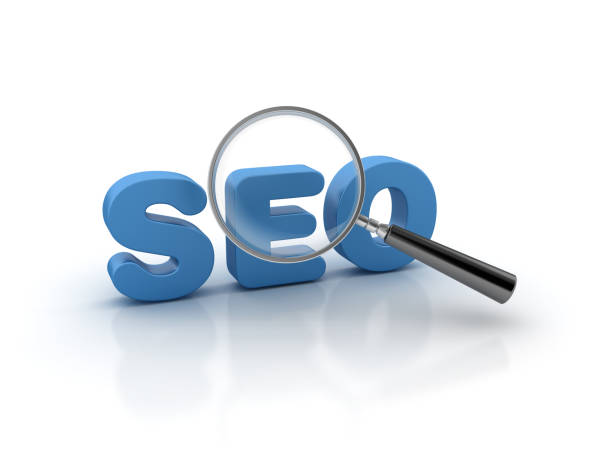
Optimizing URL Structure and Internal Links
URL structure and internal links are two important factors in On-Page SEO that help search engines better understand your site and easily find its pages.
The URL structure should be simple, descriptive, and include keywords.
Avoid using long and complex URLs.
Each page’s URL should clearly indicate what the page’s topic is.
Internal links are links that direct from one page of your site to another page of the same site.
Internal links help search engines understand your site’s structure and find important pages.
To optimize URL structure and internal links, pay attention to the following points:
- Use short and descriptive URLs.
- Use keywords in the URL.
- The URL structure should be logical and organized.
- Use internal links to important pages of the site.
- Anchor Text should be relevant to the destination page.
By adhering to these tips, you can effectively optimize your site’s URL structure and internal links and improve your site’s ranking in search results.
Your site’s structure is important; internal linking helps search engines find important pages.
Disappointed with your e-commerce site’s low conversion rate? Rasaweb transforms your e-commerce site into a powerful tool for attracting and converting customers!
✅ Significant increase in visitor-to-buyer conversion rate
✅ Unparalleled user experience to boost customer satisfaction and loyalty⚡ Get a free consultation from Rasaweb!
Optimizing Images for On-Page SEO

Optimizing Images for On-Page SEO
Images play an important role in your site’s appeal and user engagement.
However, unoptimized images can slow down site loading speed and harm your SEO.
Image optimization includes reducing file size, choosing the right format, and using Alt Text.
Image file sizes should be as small as possible to increase site loading speed.
You can use image compression tools to reduce file size.
JPEG and PNG are two popular formats for web images.
JPEG is suitable for images with many colors, and PNG is suitable for images with fewer colors.
Alt Text is text that is displayed in place of an image if the image fails to load.
Alt text should be descriptive, relevant to the image’s topic, and include keywords.
Alt text helps search engines understand the image’s topic and display it in search results.
To optimize images, pay attention to the following points:
- Reduce image file sizes.
- Use the appropriate format for images.
- Use Alt Text for images.
- Image file names should be descriptive and include keywords.
By adhering to these tips, you can effectively optimize your site’s images and improve its loading speed and SEO.
The indexing of your images is also very important.
Improving Site Loading Speed for On-Page SEO
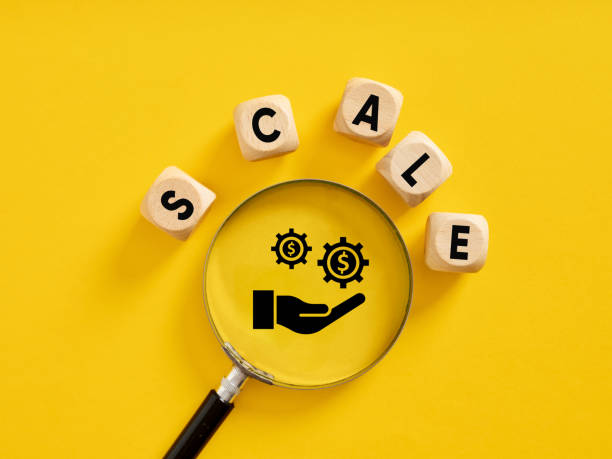
Improving Site Loading Speed for On-Page SEO
Site loading speed is one of the most important ranking factors in Google.
Users who access your site via mobile expect pages to load within a few seconds.
If your site is slow, users will leave it and visit other sites.
Site loading speed has a direct impact on User Experience and Bounce Rate.
The faster the site loads, the better the user experience and the lower the bounce rate will be.
To improve site loading speed, you can take the following actions:
- Use a fast and reliable hosting provider.
- Optimize site images.
- Use a lightweight and optimized Content Management System (CMS).
- Use optimized Plugins.
- Compress the site’s HTML, CSS, and JavaScript codes.
- Use Cache to store static files.
To measure your site’s loading speed, you can use various tools such as Google PageSpeed Insights and GTmetrix.
These tools analyze your site’s loading speed and provide suggestions for improvement.
Improving site speed has a direct impact on On-Page SEO, which is why you should routinely perform relevant tests.
Content Optimization: The Beating Heart of On-Page SEO

Content Optimization: The Beating Heart of On-Page SEO
Content is king.
This famous phrase demonstrates the importance of content in the world of SEO.
High-quality content, valuable and relevant to user needs, can attract significant traffic to your site and improve its ranking in search results.
You should focus on On-Page SEO.
Content optimization includes producing high-quality content, using keywords, proper structuring, and internal linking.
High-quality content should provide useful information to users and answer their questions.
To produce high-quality content, pay attention to the following points:
- Content must be unique and original.
- Content must be relevant to your site’s topic.
- Content must answer user questions.
- Content must be readable and understandable.
- Content must be engaging and interactive.
Use keywords naturally in your content.
Avoid overusing keywords, as this may result in your site being penalized by Google.
Instead, try to produce valuable and useful content that naturally includes keywords.
Structure your content appropriately.
Use Headings, Subheadings, Paragraphs, and Lists to organize your content.
This makes your content more readable and understandable.
Use internal links to link to other pages on your site.
This helps search engines understand your site’s structure and find important pages.
The use of On-Page SEO is very important.
| Element | Description |
|---|---|
| Title | The page title should include the main keyword. |
| Meta Description | A summary of the page content, should be engaging and include the keyword. |
| H1-H6 Headings | Used to organize content and highlight keywords. |
Optimizing Site Responsiveness for On-Page SEO
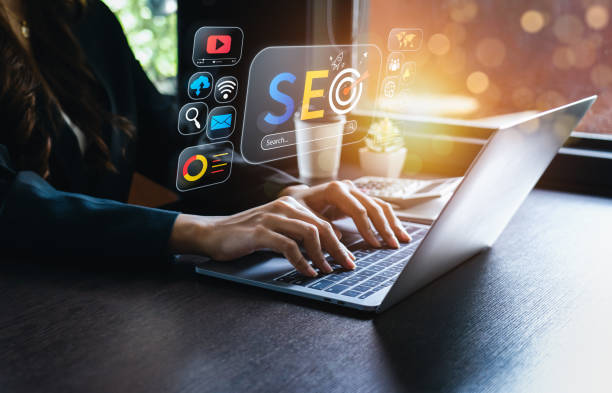
Optimizing Site Responsiveness for On-Page SEO
Responsive means the site’s compatibility with various devices such as mobile, tablet, and desktop.
Google gives a better ranking to responsive sites.
This is because these sites provide a better user experience for users.
We must note that On-Page SEO is very important.
To optimize site responsiveness, you can use the following methods:
- Use a responsive Theme.
- Use responsive images.
- Adjust fonts appropriately.
- Optimize menus and buttons for touch devices.
- Ensure your site displays correctly on all devices.
To test your site’s responsiveness, you can use the Google Mobile-Friendly Test tool.
This tool examines your site and reports whether your site is optimized for mobile.
On-Page SEO on mobile must be optimized; otherwise, you will face a drop in ranking.
Does your company’s website create a professional and lasting first impression in the minds of potential customers? Rasaweb, with professional corporate website design, not only represents your brand’s credibility but also paves a path for your business growth.
✅ Create a powerful and trustworthy brand image
✅ Attract target customers and increase sales
⚡ Get a free consultation
Using Schema Markup for On-Page SEO

Using Schema Markup for On-Page SEO
Schema Markup is a markup language that helps search engines better understand your site’s content.
By using Schema Markup, you can provide more information about your content to search engines.
This information can include content type, title, description, author, publication date, and other relevant details.
On-Page SEO also includes this point.
By using Schema Markup, you can display Rich Snippets in search results.
Rich Snippets are additional pieces of information displayed below the title and meta description.
This information can include ratings, prices, photos, videos, and other relevant details.
Displaying Rich Snippets in search results can increase the Click-Through Rate and attract more traffic to your site.
To use Schema Markup, you can utilize various tools such as the Schema Markup Generator.
These tools help you automatically generate Schema Markup codes.
After generating the Schema Markup codes, you need to add them to your pages’ HTML code.
For this, you can use WordPress Plugins.
By using Schema, you can help Google better identify your content, which is very important in On-Page SEO.
Monitoring and Continuous Improvement of On-Page SEO

Monitoring and Continuous Improvement of On-Page SEO
On-Page SEO is an ongoing process.
After performing initial actions, you must continuously monitor your site’s performance and implement necessary improvements.
For this, you can use various tools such as Google Search Console and Google Analytics.
Using Google Search Console, you can view information such as the keywords your site ranks for, site errors, incoming links, and other important data.
Using Google Analytics, you can view information such as site traffic, bounce rate, user time on site, and other important data.
By analyzing this information, you can identify your site’s strengths and weaknesses and implement necessary improvements.
For example, if you notice that your site’s loading speed is slow, you should take action to improve it.
Or, if you realize that some of your site’s pages have low traffic, you should optimize their content.
Continuous improvement of On-Page SEO ensures that your site consistently maintains a good ranking in search results and attracts more traffic.
You should constantly monitor and optimize On-Page SEO to achieve good results.
Frequently Asked Questions
| Row | Question | Answer |
|---|---|---|
| 1 | What is On-Page SEO? | On-Page SEO refers to a set of actions performed within a website (on its pages) to improve its ranking in search engine results. This includes optimizing content, site structure, and HTML codes. |
| 2 | Why is On-Page SEO important? | On-Page SEO helps search engines better understand page content and determine if that page is relevant and valuable for user searches. This better understanding leads to higher rankings. |
| 3 | What is the first and most important step in On-Page SEO? | Keyword Research is the most important initial step. By finding suitable keywords, targeted content relevant to user needs can be produced. |
| 4 | What is the role of the Title Tag in On-Page SEO? | The title tag is one of the most important ranking factors and should include the main keyword. This tag is displayed as the page title in search results and affects the Click-Through Rate (CTR). |
| 5 | What is the importance of Meta Description? | The meta description does not directly impact ranking, but by providing an attractive summary of the page content in search results, it can encourage users to click, thereby increasing the Click-Through Rate (CTR). |
| 6 | Why is using headings (H1, H2, etc.) in content important? | Headings help structure content and improve readability for users and search engine crawlers. Using keywords in headings also helps search engines better understand the topic. |
| 7 | What does Image Optimization in On-Page SEO include? | It includes compressing images to reduce size, using descriptive and relevant file names, and filling the Alt tag (alternative text) with relevant keywords to help search engines understand image content. |
| 8 | What is Internal Linking in On-Page SEO? | Internal linking refers to creating links between different pages of a website. This helps distribute page authority (Link Equity), improve user experience, and assist search engine crawlers in discovering new pages. |
| 9 | Why is Page Speed important for On-Page SEO? | Page loading speed is a direct ranking factor and significantly impacts user experience. Slow pages can lead to an increased Bounce Rate and reduced user engagement. |
| 10 | What role does quality content play in On-Page SEO? | Quality, comprehensive, unique, and valuable content for the user, is the core of On-Page SEO. This content not only attracts and retains users but also sends positive signals to search engines and contributes to better rankings. |
And other services of Rasaweb Advertising Agency in the field of advertising
- Smart Direct Marketing: A combination of creativity and technology to improve SEO ranking through key page optimization.
- Smart Marketing Automation: A creative platform to improve sales growth with precise audience targeting.
- Smart Customer Journey Map: Transform digital branding with the help of Google Ads management.
- Smart Conversion Rate Optimization: A combination of creativity and technology to increase site visits through attractive UI design.
- Smart Advertising Campaign: Transform online growth with the help of Google Ads management.
And over hundreds of other services in the field of internet advertising, advertising consultation, and organizational solutions
Internet Advertising | Advertising Strategy | Advertorial
Resources
On-Page SEO TrainingComprehensive Guide to On-Page SEOWhat is Good Content?Content Marketing Training
🚀 To reach the peaks of success in the online world, Rasaweb Afarin Digital Marketing Agency is your smart business companion. With our expertise, SEO-optimized website design is no longer a dream, but a high-yield reality.
📍 Tehran, Mirdamad Street, next to Bank Markazi, Kazeroon Janoubi Alley, Ramin Alley, No. 6




